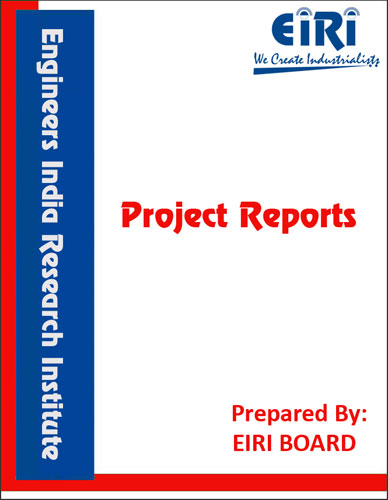RCC HUME PIPES (REINFORCED CONCRETE CEMENT)
The project report includes Present Market Position and Expected Future Demand, Market Size, Statistics, Trends, SWOT Analysis and Forecasts. Report provides a comprehensive analysis from industry covering detailed reporting and evaluates the position of the industry by providing insights to the SWOT analysis of the industry.
We can prepare PROJECT REPORT as per your INVESTMENT PLAN for BANK LOAN REQUIREMENT and INDUSTRY ANALYSIS. All reports are prepared by highly qualified consultants and verified by a panel of experts.
Have Query? Click Here to Chat
Industry Expert is Online, Chat with him for more detail.

RCC Hume pipes are made of a mixture of Portland cement, sand and aggregate in the proportion of 1:2:5:2.5 with steel rods and wires as reinforcement material. The demand of RCC hume pipes is good and having bright future scope. These pipes are manufactured in diameters ranging from 300 mm to 2200 mm or more. The RCC pipes are suitable for irrigation, culvert construction, sewerage and drainage purposes. All the plant and equipments and raw materials are available indigenous. Transportation of water, sewerage, effluents or other liquid slurries in these pipes is quite smooth. Seepage or leakage is totally avoided by proper jointing & sealing of two consecutive pieces of the pipe line. Hume pipes have reasonably good load-bearing capacity, and hence, can be laid either underground or over the ground. Carefully made pipes, tested as per IS: 458-1971, are available in a wide range of sizes for use. Well constructed steel wire/rod cage is concentrically placed inside the pipe mould where premixed concrete is charged for pipe casting. The rotating moulds receive the feed material through open ends at both ends.
Reinforced Cement Concrete (RCC) Spun/Hume Pipes are used for water drainage, sewerage, culverts and irrigation. RCC Pipes are very much preferred for such usage because they are leak proof, are easily repairable and are non-reactive to sewerage toxins. RCC Spun Pipes are classified as pressure and non-pressure pipes. viz NP1, NP2, NP3, P1, P2, P3 for use in specific conditions. RCC Hume Pipes are made from cement, course and fine aggregate, sand, mild steel and HT Rods and bars. These hume pipes are produced with excellent precision using the best grade RCC. These hume pipes are largely used for carrying sewage and water from one place to another.
The manufacturing process and testing the pipes
These RCC HUME PIPES are manufactured by using best quality raw-materials in various dimensions and weights in compliance with best international standards. These pipes may also be customized as per the clients requirements. The clients may select from various range of pipes that are known for durability, strength and reliability. These pipes are produced by using cement, sand, aggregate and steel.
The IS specification for the concrete and steel are gathered according to the BIS code IS 458: 1958.
Each ‘EIRI’ MARKET OVERVIEW CUM DETAILED TECHNO ECONOMIC FEASIBILITY REPORT (Complete Report) tentatively covers
• Introduction
• Properties
• BIS (Bureau of Indian Standard) Specifications & Requirements
• Uses & Applications
• Present Indian Market Overview/Position
• Export & Import Statistics Data
• Names and Addresses of Existing Units (Present Manufactures)
• List of Plant & Machineries
• Miscellaneous Items and Accessories
• Instruments, Laboratory Equipments and Accessories
• Electrification, Electric Load and Water
• Maintenance, Suppliers/Manufacturers of Plant and Machineries
• Manufacturing Process with Formulations (If applicable)
• Flow Sheet Diagram
• List of Raw Materials
• Availability of Raw Materials
• Requirement of Staff & Labour
• Personnel Management
• Skilled & Unskilled Labour
• Requirement of Land Area
• Built up Area
• Plant Layout
Along with financial details as under:
• Summary of Capital Cost of Project
• Land & Side Development Exp.
• Buildings
• Plant & Machineries
• Misc. Fixed Assets
• Technical Know how Fees & Exp.
• Preliminary Expenses
• Pre-operative Expenses
• Provision for Contingencies
Below mentioned financial statements (Annexure) will be for 5 to 10 Years
• Annexure:: Cost of Project and Means of Finance
• Annexure:: Output, Profitability and Cash Flow Chart
• Annexure:: Assessment of Working Capital requirements
• Annexure:: Sources of Finance
• Annexure:: Balance Sheets
• Annexure:: Break-Even Analysis and profitability analysis.
• Annexure:: Quantitative Details-Output/Sales/Stocks
• Annexure:: Sales Realisation
• Annexure:: Raw Material Cost
• Annexure:: Other Raw Material Cost
• Annexure:: Packing Material Cost
• Annexure:: Consumables, Store etc.,
• Annexure:: Employees Expenses
• Annexure:: Fuel Expenses
• Annexure:: Power/Electricity Expenses
• Annexure:: Repairs & Maintenance Exp.
• Annexure:: Other Mfg. Expenses
• Annexure:: Administration Expenses
• Annexure:: Selling Expenses
• Annexure:: Depreciation Charges – Profitability
• Annexure:: Depreciation Charges
• Annexure:: Interest and Repayment – Term Loans
• Annexure:: Tax on Profit
• Annexure:: Assumptions for Profitability workings
• Annexure:: Assessment of Working Capital



